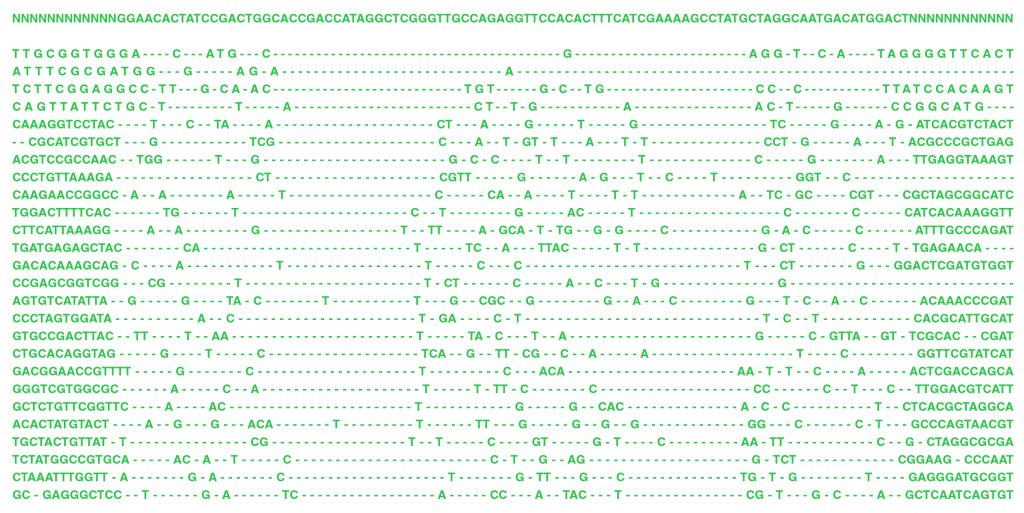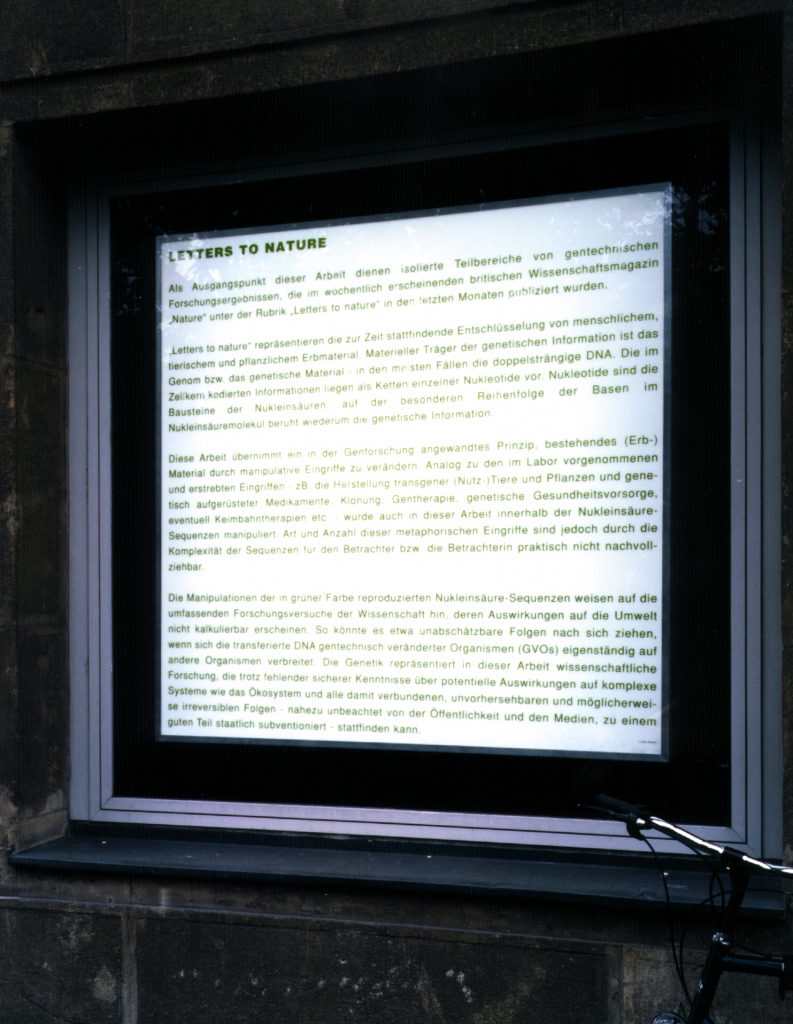Lightboxes in showcase windows by Oliver Ressler
Kunsthalle Wien, Vienna, 1995
The work conceived for the Kunsthalle Wien’s showcase window is based on isolated sections from genetic research published in “Letters to nature,” a column in Nature, the weekly British science journal,over the past few months.

“Letters to nature” represents the current decoding of human, animal, and vegetative genetic material. The material carrier of genetic information is the gene, or the genetic material – in most cases, the double-stranded DNA. The information encoded in the core of the cell exists as a chain of individual nucleotides. Nucleotides are the building blocks of nucleic acids; and genetic information rests on the particular sequence of bases in the nucleic acid molecule.
This work takes on genetic research’s principle of transforming existing (genetic) material through manipulative interventions. Analog to interventions occurring and strived for in the laboratory – e.g., the production of transgenetic (work) animals and plants and genetic-medicines, cloning, gene therapy, genetic preventative health, experimental umbilical cord (stem cell) therapies, etc., in the work presented here, manipulations will take place within the nucleic acid sequences.

It is not possible for viewers to know the type and number of these metaphorical interventions. However, a text in one of the five showcase windows informs them of the transformations carried out on the DNA-strands.

The manipulation of the nucleic acid sequences, reproduced in a green color, points out the extensive scientific research attempts, the consequences of which appear incalculable for the environment. For example, inestimable results can occur when the transferred DNA of genetically manipulated organisms (GMO’s) spread of their own initiative onto other organisms. In this work, genetics represents scientific research, which despite certain knowledge of potential effects on complex systems such as the ecosystem and all of the associated, unforeseeable, and possibly irreversible results, is able to take place, in part with state funding, nearly unencumbered by public and media scrutiny.
